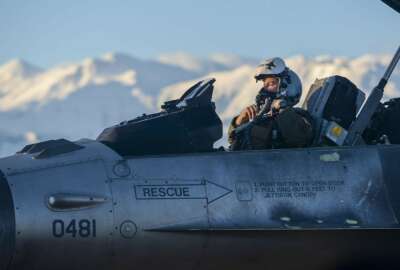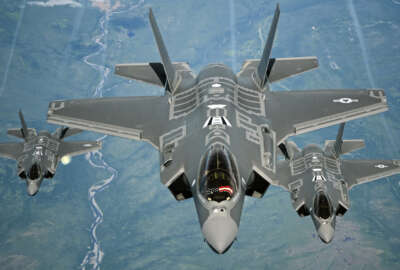
Air Force expands hazardous pay to help battlefield airmen
The Air Force is giving battlefield airmen incentive pay even when they are not in a war zone to encourage them to seek medical care and stay in the service.
The Air Force is implementing yet another program to try to keep some of its most sought after talent in the service.
The Defense Department approved a new pilot pay program for battlefield airmen.
Battlefield airmen serve as a link between ground and air forces, embedding with ground troops to give air units eyes from down below.
The new pilot will pay battlefield airmen an incentive pay even when they are not in hazardous situations.
“The reason we did this was to try to retain these airmen in the military, we want to ensure that they don’t lose their incentive pay when we mandate broadening tours to be instructors or to go on staffs. We also wanted to remove the financial disincentive to seek medical care, whether that’s for physical or mental injuries,” Air Force spokesman Col. Patrick Ryder told reporters June 22 at the Pentagon.
Currently, battlefield airmen only get incentive pay when working in hazardous environments. The pilot program will treat the battlefield airman position almost as its own pay tier. Regardless of where the battlefield airman is stationed, be it as an instructor, in the Pentagon or in a war zone, the airman will still receive incentive pay because he or she did the required training for the position.
“The former pay structure restricted battlefield airmen with physical injuries, who would frequently lose pay prior to full recovery or it would prevent some from self-identifying and seeking mental health treatment for fear of losing their pay. Deployments, staff duty, special duty assignments, these were all encumbered by administrative restrictions for personnel to maintain hazardous duty pay,” Ryder said.
The pilot program is set to begin in the fall and will pay battlefield airmen a maximum stipend of $615 a month.
The program will last three years and then be evaluated by the Air Force.
The service has made a major push recently to retain top talent in the Air Force.
The Air Force is hurting for airmen trained in cyber, drone operators, pilots and maintainers.
This comes as the military service just increased to 321,000 active duty airmen and is planning to move up to 325,000 in 2018 if it can get approval from Congress.
To recruit the extra 4,000 airmen in 2018, the Air Force is asking for 200 recruiters and training personnel to open the pipeline for 29,000 new enlisted airmen.
At the same time the service must deal with an expected loss of about 57,000 airmen in 2018 from regular attrition.
The service is implanting other changes outside of pay to keep airmen from flying away.
Last year the Air Force trimmed additional duties for which airmen were responsible. It also cut back on extra training.
The Air Force released a list of the courses it eliminated or streamlined. A computer-based, 20-minute training course providing an introduction to the role of the Inspector General all got the ax from the service.
The service also updated its tattoo policy to make it more accommodating to millennials and loosened its restrictions on prior marijuana use.
Copyright © 2025 Federal News Network. All rights reserved. This website is not intended for users located within the European Economic Area.
Scott Maucione is a defense reporter for Federal News Network and reports on human capital, workforce and the Defense Department at-large.
Follow @smaucioneWFED




